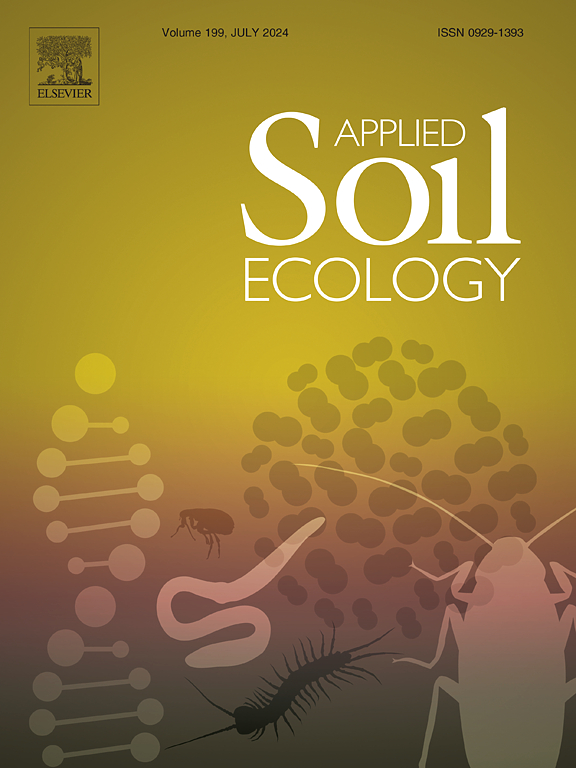Deciphering drought adaptation in Eucommia ulmoides: From the rhizosphere microbiota to root metabolites
IF 4.8
2区 农林科学
Q1 SOIL SCIENCE
引用次数: 0
Abstract
Rapid global climate change has made drought stress a significant limiting factor for plant growth and productivity. While the effects of drought on plant metabolism and the rhizosphere microbiota are well-documented, our understanding of their dynamically interplay and potential synergies in enhancing plant adaptability during droughts is incomplete. Herein, using Eucommia ulmoides as a model system under drought stress and integrating metagenomic sequencing, untargeted metabolomics, and plant physiological assessments, We found that drought altered the root metabolites profile of E.ulmoides, notably enriching the flavonoid 6”-O-Acetylgenistin. Additionally, the co-occurrence network of rhizosphere microbiota shifted dynamically under drought, with core taxa including Bordetella, Janthinobacterium, Methylobacter, Noviherbaspirillum, Pseudomonas, Acidovorax, Variovorax, and the rare taxa Tindallia showing significant correlations with soluble sugars (SS), as was the key metabolite 6”-O-Acetylgenistin. Collectively, root metabolites and core rhizosphere taxa influence plant functional traits, enhancing the plant's adaptability to drought stress. These findings offering novel insights into strategies to increase plant adaptation during droughts.
求助全文
约1分钟内获得全文
求助全文
来源期刊

Applied Soil Ecology
农林科学-土壤科学
CiteScore
9.70
自引率
4.20%
发文量
363
审稿时长
5.3 months
期刊介绍:
Applied Soil Ecology addresses the role of soil organisms and their interactions in relation to: sustainability and productivity, nutrient cycling and other soil processes, the maintenance of soil functions, the impact of human activities on soil ecosystems and bio(techno)logical control of soil-inhabiting pests, diseases and weeds.
 求助内容:
求助内容: 应助结果提醒方式:
应助结果提醒方式:


